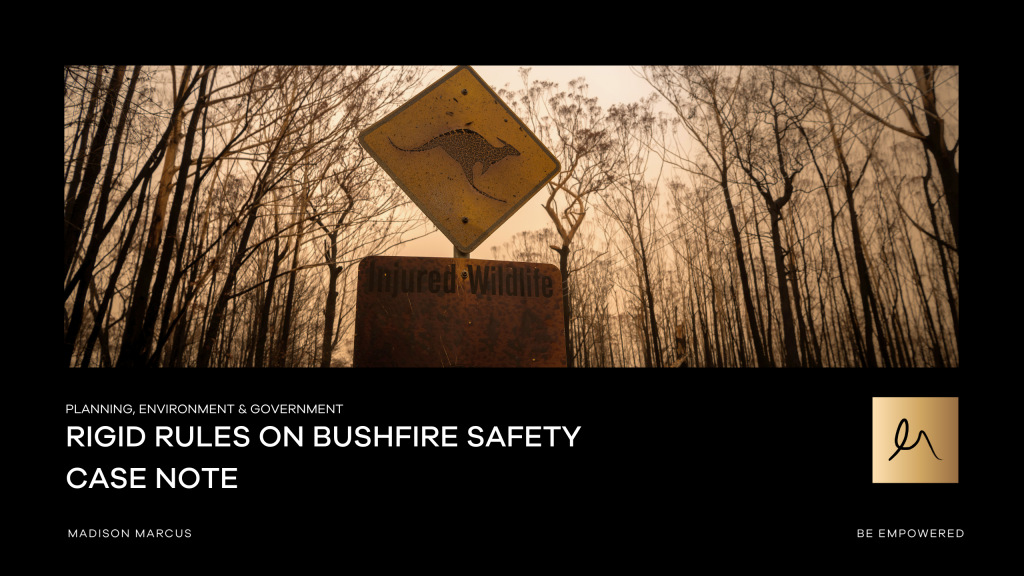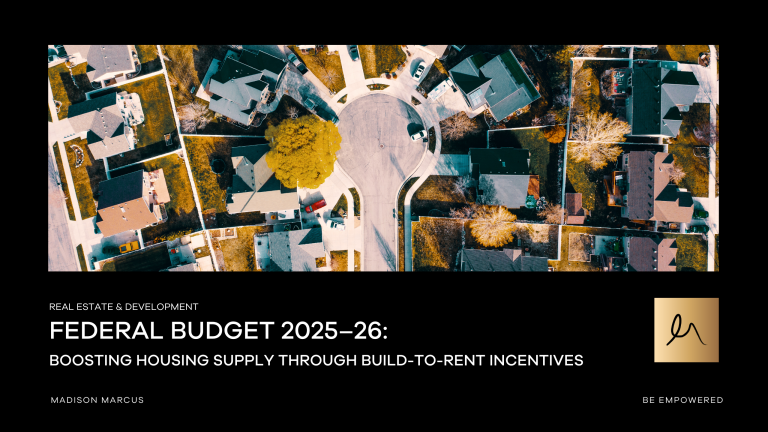Case Note: No Flexibility When it Comes to Bushfire Protection
Planning for Bushfire Protection 2019 (“PBP”) is the preeminent guide for new development on bushfire prone land in NSW. A key protection measure under PBP is the asset protection zone (“APZ”). The APZ is an area of land around a building that is managed to minimise fuel loads and reduce potential radiant heat levels, flame, localised smoke and ember attack. The distance of the APZ is based on vegetation type, slope and the nature of the building. A proposal may comply with the requirements of PBP by either meeting specified acceptable solutions, or by an alternative (performance based) solution.
The Chief Judge of the Land and Environment Court recently clarified in (Shoalhaven City Council v Easter Developments Pty Ltd [2024] NSWLEC 49) the circumstances in which an alternative solution is acceptable when an APZ is located on adjoining land owned by a council. The matter involved an appeal against a decision of a Commissioner of the Court, Commissioner Espinosa, to grant development consent to a three-lot subdivision at Vincentia.
The proposed subdivision involved an APZ located partly within the development site and partly into adjoining land owned by the Council. The acceptable solution under PBP requires the entire APZ to be contained within the overall development site, and not on adjoining land.
The Commissioner approved the development application on the basis that the proposal satisfied an alternative solution under PBP because the Council land was already managed as an APZ. The Council contented against this finding, saying that the status of the land as “managed land” was not recognised as an alternative solution under PBP. The Chief Judge agreed with the Council and held that the Commissioner “asked the wrong question”. This lead the Commissioner to make a material error in approving the development application.
The Chief Judge noted that PBP allowed an alternative solution for an APZ on adjoining land when the APZ would be managed in perpetuity. For adjoining privately owned land this meant an easement under section 88B of the Conveyancing Act to ensure (a) surety of APZ and the correct management prescriptions; and (b) that management occurs in a binding legal agreement in perpetuity.
For an APZ on adjoining land owned by a council, the alternative solution under PBP requires:
- the adjoining land to be “managed in perpetuity” (as required by s 3.2.5 and s 3.2.6 of the PBP);
- an adopted Plan of Management under the Local Government Act 1993 applying to the land that provided an assurance that the APZ would be managed in perpetuity and demonstrating “that a management regime is in place to ensure ongoing compliance with the APZ requirements” (s 3.2.6 and s 5.2 of the PBP);
- the APZ to achieve the four performance criteria for APZs for residential subdivisions (in s 5.3.1 and Table 5.3a of the PBP).
Instead of applying the above requirements, the Commissioner determined that the adjoining council land was existing “managed land”, because the land was currently managed as an APZ. The Chief Judge held that this determination “had no foundation in the PBP, or any other section of the PBP.” It was irrelevant whether the adjoining land was managed land.
If the Commissioner had applied the correct criteria under PBP, the “only conclusion” available to the Commissioner was to find that the performance based solution was not achieved.
The decision in Easter Developments demonstrates that PBP must be followed to the letter. There is no flexibility when it comes to new development on bushfire prone land.
In summary, the Shoalhaven City Council vs. Easter Developments case serves as a pivotal example of the strict enforcement of bushfire protection guidelines. The ruling by the Chief Judge of the Land and Environment Court clarified that alternative solutions involving Asset Protection Zones on adjoining lands, even those managed by councils, must meet rigorous standards set by the Planning for Bushfire Protection 2019. This decision highlights the non-negotiable nature of safety and legal compliance in developments on bushfire-prone lands.
As we observe the implications of this decision, it prompts us to consider the evolving dynamics between urban development and environmental constraints. Do current regulations strike the right balance between urban expansion, housing affordability and bushfire risks? Could this case potentially raise the bar for future developments across New South Wales? These questions not only encourage discussion but also equip us for the challenges of sustainable development in fire-prone landscapes.
Engage in this conversation and explore how legal frameworks shape our environment and safety.






